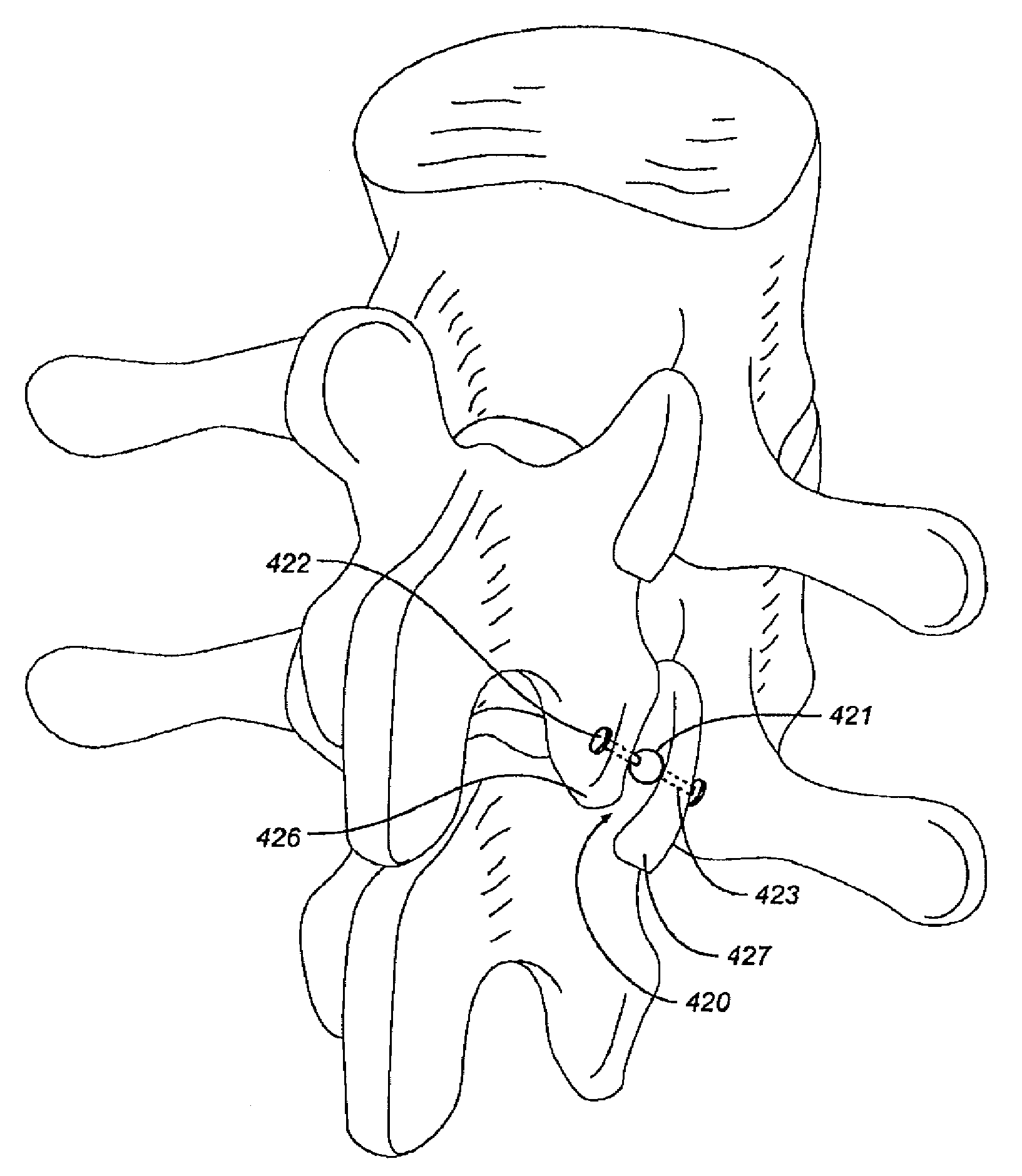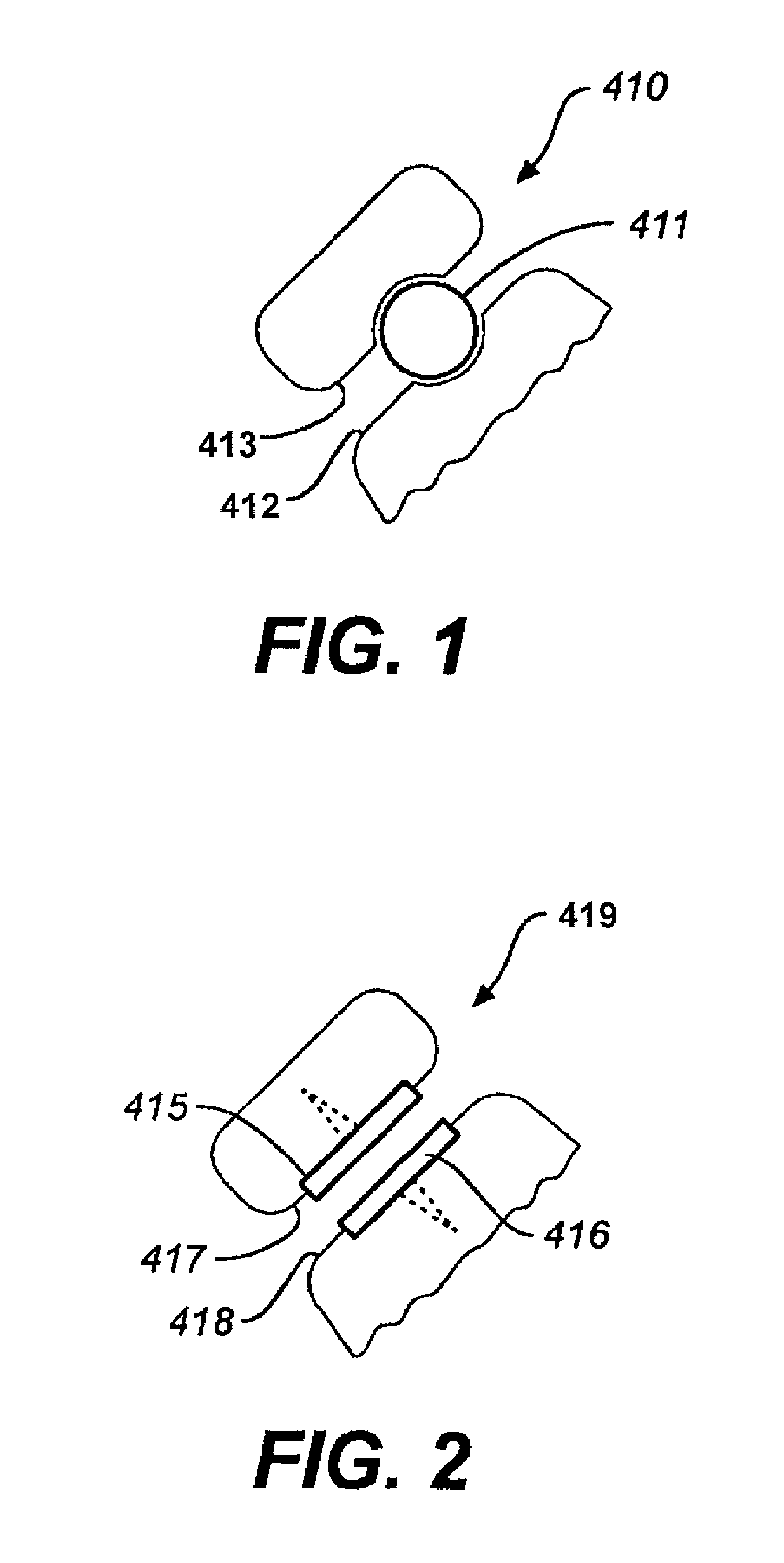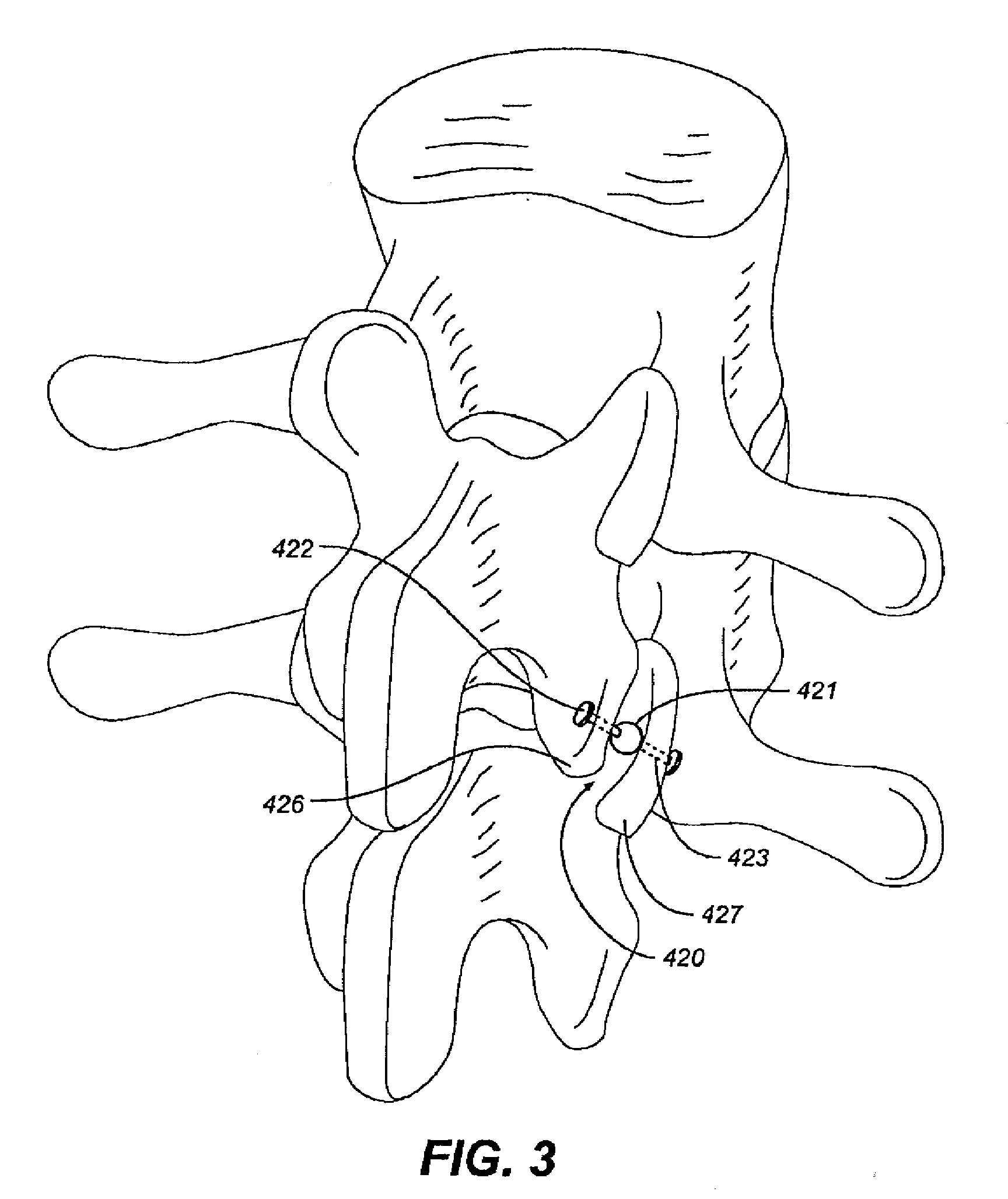Facet device and method
a facet and spine technology, applied in the field of spine devices, can solve the problems of degeneration of discs, pain or other manifestations, nerve or spinal cord damage, structural instabilities, etc., and achieve the effects of less surrounding tissue damage or disruption, reducing discomfort and or deformity, and reducing pain and or deformity
- Summary
- Abstract
- Description
- Claims
- Application Information
AI Technical Summary
Benefits of technology
Problems solved by technology
Method used
Image
Examples
Embodiment Construction
[0036]FIGS. 1-5 illustrate facet repair prostheses in accordance with an embodiment of the invention. Prosthesis 410 comprises a ball bearing 411 implanted between the caudal and the cephalic facets 412, 413 of the zygapopyhseal joint. (FIG. 1) The joint is prepared by removing soft tissue between the joints and creating a concavity on adjacent facet plates for receiving the ball bearing.
[0037]In FIG. 2, magnets 415, 416 including smooth interacting bearing surfaces are respectively screwed into the cephalic and caudal facets 417, 418 of the zygapopyhseal joint 419. The magnets 415, 416 are oriented so that like poles face each other (e.g. North-North or South-South) to provide a distraction force at the joint. The magnets may have a center hole through which a rod is inserted to resist the tendency of one magnet to move relative to the other. Each end of the rod may have a diameter larger than the center holes. This system may be used in other joints in the body to maintain separat...
PUM
 Login to View More
Login to View More Abstract
Description
Claims
Application Information
 Login to View More
Login to View More - R&D
- Intellectual Property
- Life Sciences
- Materials
- Tech Scout
- Unparalleled Data Quality
- Higher Quality Content
- 60% Fewer Hallucinations
Browse by: Latest US Patents, China's latest patents, Technical Efficacy Thesaurus, Application Domain, Technology Topic, Popular Technical Reports.
© 2025 PatSnap. All rights reserved.Legal|Privacy policy|Modern Slavery Act Transparency Statement|Sitemap|About US| Contact US: help@patsnap.com



